Growing up, my parents had orange trees and stone fruit trees that I swear were planted in unamended clay soil and were never – ever – fertilized. They thrived. My three citrus trees, on the other hand, which were planted with good drainage, plenty of compost and lots of care, are sad, sad, and more sad. What gives?
Our top New Years’ Resolution was to figure out what was wrong with our citrus trees. I searched around for advice from fellow garden nerds, many of whom reminded me that citrus trees are heavy feeders and benefit from foliar feeding (taking in liquid fertilizer’s nutrients sprayed on their leaves), and I found some good ideas. But the first step is to find out what’s missing. Enter the home soil test:
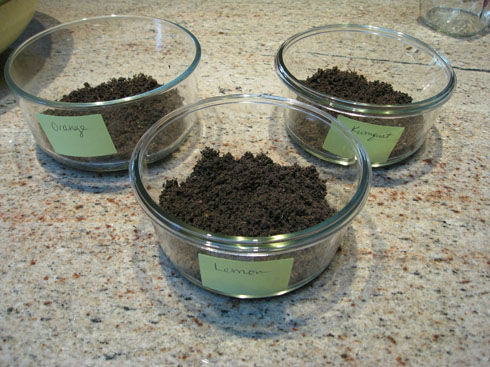
Three soil samples from three different citrus trees
Soil tests generally reveal nitrogen, phosphorus and potassium levels, along with pH. You can find them at nurseries, but more often than not, it’s easier to order one like this online.
First – READ ALL THE INSTRUCTIONS! It’s important because if you don’t, you’ll mix a soil sample and then find out that it needs to be collected differently, or that you’re supposed to take the pH sample before adding water to the rest of the soil. Now…
Take a Sample – collect soil from the root zone of the trees. For us this meant clearing away the layers of mulch and compost (and worm castings) and digging down about 4 inches to obtain a sample. Take soil from three or four places around the tree. You will need about 1 cup of soil for each sample. Label it separately if you are doing more than one tree. Wear gloves. Touching the soil with your hands can alter the results.
Do the pH Test – this is done before mixing water into the sample. It’s pretty simple: spoon a bit of soil into the test chamber, fill with water, add a capsule, put the lid on and shake. Wait a minute for it to develop in color and mark down the results.
Citrus trees prefer acidic soil; ours tested at 6.5 – slightly acidic. So we’re good on pH!
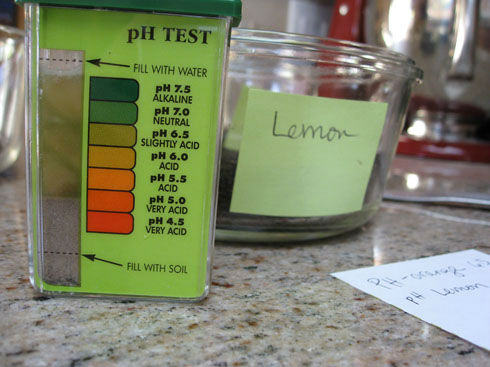
The color matches the chart at 6.5. We repeated this test for all three trees, which all
registered at a pH of 6.5
Mix the soil samples with water – The rest of the soil is mixed with 5 parts water and allowed to settle so that just the liquid solution can be sampled. This can take up to 24 hours. Don’t rush the process. It’s worth the wait. Clay soil can take longer to settle than sandy soil.
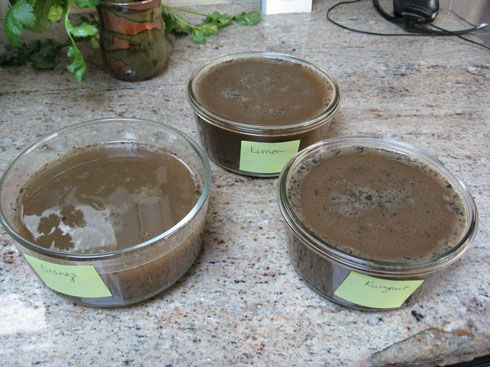
Soil samples right after mixing. Ours took about 18 hours to settle, so sleep on it…
NPK tests – Once you have a layer of liquid that is relatively free of soil (it will be cloudy, and that’s okay), use the dropper that comes with the kit to extract liquid from the surface and fill the test chamber up to the line. You will test N, P, and K for all your samples separately, so you might want to mark the sample you are working with so you don’t get lost. It can happen…
Add the appropriate test capsule to the chamber, put the lid on and shake. Set a timer for 10 minutes and walk away. Don’t shake the kit again after the results appear, it will completely change the color you see in some cases.
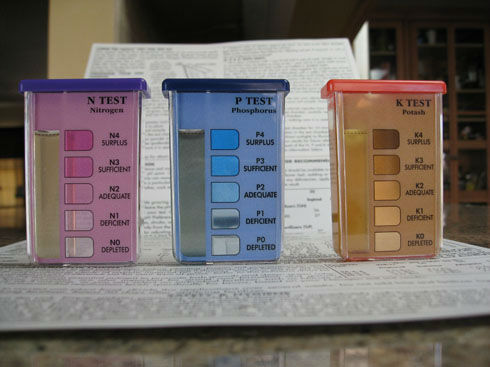
Our results for each tree were similar: depleted nitrogen, deficient phosphorus and adequate to sufficient potassium
Amend your soil – The soil test will make suggestions for amendments based on your results. Note: Most soil tests make recommendations based on typical levels of chemical/synthetic fertilizers, so the numbers are a lot higher. For example, most organic fertilizers have numbers like 7-5-4, whereas chemical fertilizers are 20-30-20. The soil test I have actually recommends phosphorus based on a level of 46! That’s a lot.
For our purposes, we used blood meal (15-0-0) since we had it lying around, and some organic citrus fertilizer (7-4-3). I will probably need to as some rock phosphate as well, but this is a start.
So next will be to figure out why the soil isn’t absorbing the layers of compost and worm castings we’ve been putting on top of it…
If you have suggestions, please share them here.


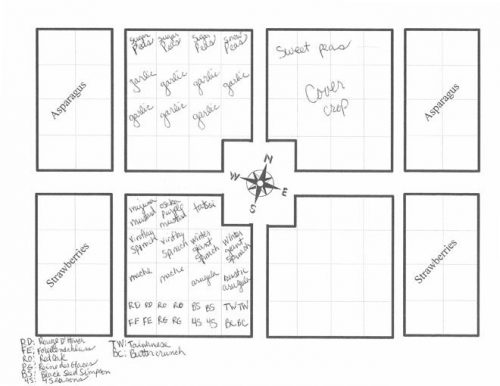
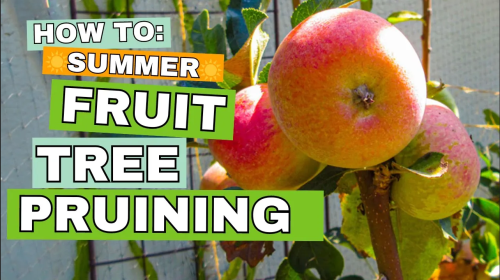
Pingback: Ask Gardenerd: Soil Test Kits - Gardenerd
The only correspondence was that both measured low nitrogen. Even the area that I had been fertilizing with chicken manure and compost was low. Since my foliage was not very lush I believed it. Studying the old Organic Gardening Encyclopedia I found I would have had to add about a ton of chicken manure to my small garden to correct the situation. I switched to using rabbit manure and most everything is just beautiful. Except for my citrus, a lonely lemon tree. I’m wondering if something is eating it’s roots.
Thanks for sharing. One question just to clarify: Did your Auburn U results jive with the store bought soil test results?
That soil testing kit looks just like the one I tried. I got the same results you did for every part of my property I tested. I knew it couldn’t be right since some spots were heavily amended and others were varying degrees of barren. I resorted to sending samples to Auburn U and got detailed results that jived with the observed vegetation. It was very helpful but too costly for me to do every year